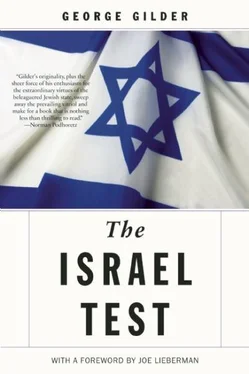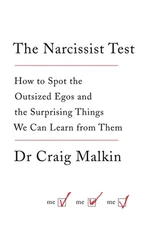During this period of Jewish settlement before the creation of Israel, opportunities in Palestine attracted hundreds of thousands of Arab immigrants from Iraq, Syria, Jordan and the desert. Wages for Arab workers were double or more the wages in Syria, Jordan and Iraq. In 1936, a British Royal Commission concluded, “The whole range of public services has steadily developed to the benefit of the [Arab] fellaheen… the revenue for those services having been largely provided by the Jews.”
According to Lowdermilk’s data, during the 50 years between 1889 and 1939, the number of Jewish settlements rose from 22 to 252 and land under cultivation grew more than fivefold, from 75,000 acres to 400,000 thousand. The country emerged from a “backward low yielding agricultural economy, dependent on grains and olives, and is evolving toward a modern scientifically directed and richly diversified economy, with fruits, vegetables, poultry, and dairy products. Tractors and threshers replace wooden plows and flails.” With milk sales surging from a million litres in 1924 to 26 million in 1941, and honey production up from 900,000 pounds in 1936 to an estimated five million pounds in the mid-1940s, Palestine was once again on its way to reclaiming the Promised Land of Exodus as “flowing with milk and honey.”
Lowdermilk clinches the argument by a sophisticated comparison with conditions in Jordan. A country four times larger than the British Mandate of Palestine (including Sinai), Jordan partakes of the same mountain fold of mesozoic limestone, the same rich river plains, the same Rift Valley and highlands, the same mineral resources, the same climate, and a several times larger population in ancient time. “The fortunes of Trans-Jordan through three thousand years merge with those of Palestine because of the physiographic unity of the two areas draining into the Jordan Valley.” But despite Jordan’s endowment of fertile soil, its comparatively ample water and ideal climate, at the time of Lowdermilk’s visit, its agricultural output and per capita consumption of imports was one-fifth that of Palestine while its population density was only one-tenth of Palestine’s.
The only discernible difference was the absence of Jewish settlements in Jordan. Without Jewish settlements, Jordan was suffering heavy emigration (mostly to America and to the British Mandate itself) while the Mandate territory attracted increasing flows of immigrants, mostly clustering around the Jewish settlements. With Jewish advances in food production, medicine and public hygiene, Arab health statistics increasingly converged with those of the settlers. While the Arab birthrate actually decreased by 10 percent, the death rate fell by one-third and infant mortality dropped 37 percent. The net result was an Arab annual population growth rate of 16.2 percent, the highest in the world (exclusive of immigration). Lowdermilk summed it up: “Rural Palestine is becoming less and less like Trans Jordan, Syria and Iraq and more like Denmark, Holland, and parts of the United States [Southern California].”
As Lowdermilk wrote, “If we are interested in the regeneration of man, let all the righteous forces on earth support these settlements in Palestine as a wholesome example for the backward Near East, and indeed, for all who seek to work out a permanent adjustment of people to their lands.”
Against all these heroic advancements, however, a European-originated countercurrent was flowing, and was indeed, about to reach its crest in the grotesque anti-Semitic horrors of the following decade. Just as the boom of the 1980s in the territories was followed by an intifada (“uprising” in Arabic) in 1990, so the advances fostered by Jewish settlers brought the siege of riots and pillaging that came to be known as the “Arab Awakening” of 1936 and 1937. As widely reported by Lowdermilk and others on the scene, and affirmed by Winston Churchill, during the previous decade, “Fascist Italy and Nazi Germany were very active in fomenting Arab discontents.”
“I often thought,” wrote Lowdermilk, “of what would happen to the Jews of Palestine and to the country as a whole if Jewish immigration were effectively stopped and the land placed under full Arab control as envisaged in somewhat nebulous form by the British White Paper of May, 1939.” The answer had already been given in 1937, by the Grand Mufti of Jerusalem, the most notable Palestinian leader, who soon enlisted in Hitler’s cause and spent the war at his headquarters in Berlin. “All Jewish immigration should be prohibited,” the Mufti said, “since the country could not even absorb the Jews who were already there.” They would have to be removed by a process “kindly or painful as the case might be.”
Lowdermilk made a prescient prediction based on the precedent of Iraq. When the British relinquished their mandate there, the Iraqi leaders vowed to protect the Assyrians, which was the Christian minority in the country. “Instead, the Assyrian Christians were slaughtered by Arabs of the Mufti’s ilk who did not wish to ‘assimilate or digest them.’”
Lowdermilk foresaw that “Arab rule in Palestine would… put an abrupt end to the reclamation work now being carried on so splendidly. Erosion would begin to have its way again in the fields. Peasant women in search of fuel and goats in search of pasture would make short work of the young forests.”
Any end of Jewish immigration and settlement would mean a rapid end of Arab immigration and prosperity. Under Arab rule, Palestine had always been a somnolent desert land that could have sustained no authentic twentieth-century Arab awakening. Palestine without Jews is a not a nation but a naqba .
CHAPTER FOUR
The Palestinian Economy
After World War II, when the surviving Jews of Europe fled to Palestine and what became the state of Israel, there was still no self-conscious Palestinian nation, no Arab industrial base, and virtually no exports other than oil. The Jews were not occupying a nation; they were building one.
Many people imagine that this new and larger influx of Jewish settlers after World War II perpetrated an injustice on the Arabs. But these Jews continued the heroic and ingenious pattern of development depicted in 1939 by Lowdermilk and imparted the same massive benefits to the Palestinian Arabs.
With the Arab population growing apace with the Jewish population in most neighborhoods, and, indeed, even faster in some, no significant displacement could possibly have occurred. The numbers discredit as simply mythological or mendacious all the literature of Palestinian grievance and eviction invented by the likes of Ilan Pappe, Avi Shlaim, Rashid Khalidi and scores of other divas of the naqba narrative. What took place, in fact, was the reclamation and enrichment of the land, and, as a consequence, a massive Arab migration to inhabit that land.
By 1948, the Arab population in the Mandate area had grown to some 1.35 million, up 6 0 percent since the 1930s, and up by a factor of seven since the arrival of the first creative cohort of Jews from Russia and what was then The Ukraine in the 1880s. Mostly concentrated in neighborhoods abutting the Zionist settlements, this Arab population was the largest in the history of Palestine. Only invasion by five Arab armies — and a desperate, courageous Israeli self-defense — drove out many of the Arabs, some 700,000. These Palestinian Arabs were chiefly evicted or urged to flee by their own Arab leaders in 1948 in a war that the Jews neither sought nor initiated. But the war’s outcome inflicted no demographically perceptible hardship on the Palestinian Arabs. The creation of the state of Israel and the success of its thriving economy only served to accelerate Arab immigration into the area. Today Israel, Gaza and the West Bank accommodate some 5.5 million Arabs, with a population density ten times that of Jordan.
Читать дальше












